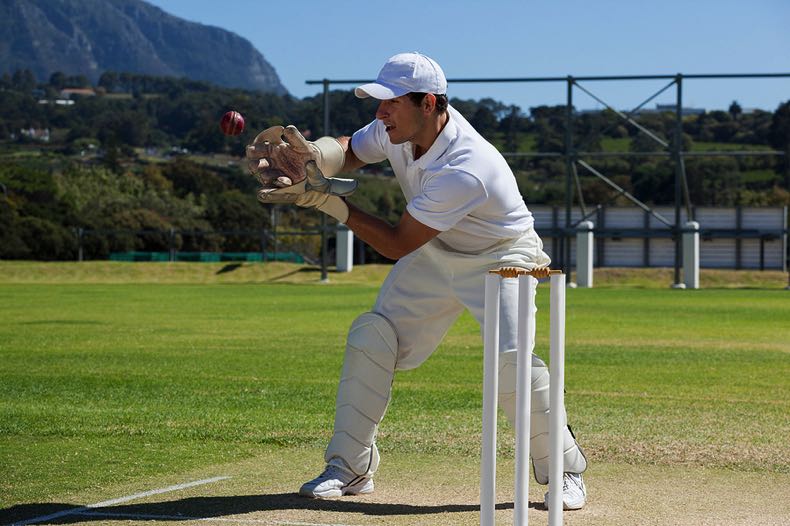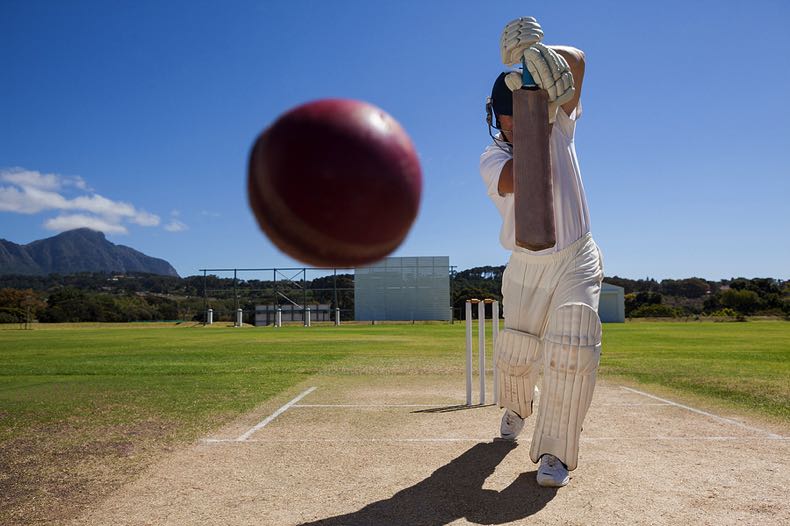 Let’s deal with the simple things first, just in case you didn’t know; cricket stumps are the three vertical posts the batsman stands in front of. These stumps support the bails, together forming the wicket. When the bails are removed from the stumps, a batsman may be out.
Let’s deal with the simple things first, just in case you didn’t know; cricket stumps are the three vertical posts the batsman stands in front of. These stumps support the bails, together forming the wicket. When the bails are removed from the stumps, a batsman may be out.
Some consider the width of the wicket as important as the height. Either way, if you give a bowler too much of a sight of it you may be heading back to the pavilion. The width of the wicket overall is 9 inches. Each stumps is 28 inches tall. The maximum diameter of each stump is 1½ inches. The minimum diameter allowed for each stump is 13⁄8 inches.
The height of stumps in cricket is standard at 28 inches, as is the overall 9-inch width. There is a tiny bit of wiggle room however regarding the diameter of each individual stump. Each stump is spiked at the bottom to allow insertion into the ground, while the top of the stump features a U-shape groove on which the bails are placed. Two bails are placed across the three stumps to form the wicket.
Stumps sizes can be lower in junior cricket.
Stump Names

While the stump heights are all the same, each of the three has a different name once placed together into the ground, namely:
- Off Stump: The offer stump, placed on the off side, is on the same side as the bat. For a right-hander, this would be the stump to the left of centre as we look down the wicket on TV.
- Middle Stump: Fairly self-explanatory – this is the middle of the three.
- Leg Stump: This is placed on the on side, aligned with the batsman’s legs. The leg stump is on the right as we look for a right-handed batter, and on the left for a left-hander.
The above is true of all forms of cricket. The stump size and names of the stumps forming the wicket remain consistent in domestic cricket, amateur cricket and international cricket. This is true of T20, ODI and test cricket. There are however different styles of stumps these days providing information, communication and entertainment.
Stump Types & Modern Variations
Even going back some time, we’ve seen some logos on stumps as a form of sponsorship of games. This of course is mostly for the benefit of TV commercial money. Over time however, we’ve seen these styles pop up:
Stump Cameras
Stump Cam has been around for a while now. Initially, stump cameras simply gave us watching at home a different view of a delivery and often a wicket. One or more of the stumps placed in the ground may be hollow to allow the camera and wires.
They can include sound as well, meaning we often pick up some of the sledging being handed out by the fielding team to the batters. A big hit with TV audiences over the years has been stump cam showing a batsman being bowled. Often, the stump with the cam is knocked clean out of the ground and is tossed up into the air.
Light-Up Stumps
A big hit in the shorter forms of the game, such as in ODIs and T20 games, light-up stumps and ‘zing bails’ are often used.
Red LED lights are placed within the stumps. These lights flash when the stumps have been dislodged, which provides not only a little entertainment but instant recognition for fans when a player has been bowled out.
While the entertainment factor is huge, Zing Bails and light-up stumps were invented in Australia initially to help the umpires for run-outs and stumpings. The advent of day-night matches also meant that light-up stumps were a good visual aid.
The LED light-up stumps were used first during the 2014 ICC World Twenty20. Popular in all T20 leagues, they are now also commonly seen in other major one-day games such as ODI’s. Day/night test matches are also known to have utilised light-up stumps.
That Stumps It Up

Cricket jargon can be confusing. The pitch is often described as the wicket, while the stumps and bails together are also called the wicket. Stumps are stumps, literally, but “stumps” is also a phrase called out by umpires to signal the end of the day’s play. An umpire ‘calling stumps’ means that they have officially declared play for the day to be finished. At the end of each session, the umpire will remove the bails to signal this. At the end of the day, the bails and the stumps are removed.
